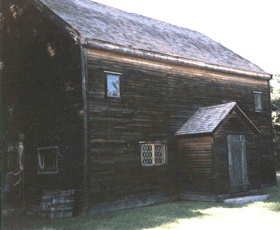Salem Village Politics
We have seen that in 1672, when Salem Village received permission to hire its own minister, it was also empowered to establish a committee of no more than five members to assess and collect taxes for the ministry. Committee members were usually elected each year at a village meeting. The village's general meeting was its primary political institution. When it was called, Salem Villagers gathered to vote on a variety of issues: building a meeting house to serve as its church and civil center; constructing a ministry house to accommodate their ministers; hiring ministers; appointing special committees to handle village business with neighboring communities; and determining voting qualifications. Meetings could be contentious.
Although subordinate to the general meeting, the Committee of Five held a prominent position in village life. It assigned rates, collected and disbursed money for the maintenance of the ministry, and issued notices for general meetings. Inevitably, these committees reflected disagreements in the community, particularly the village's contention over its ministers. We have seen, for example, that the election of a new committee in October 1691, significantly ratcheted up village tensions when it undertook a series of measures hostile to Samuel Parris's ministry.
To investigate Salem Village's Committee of Five, download the Committee Yearly Data Set and click Next.
